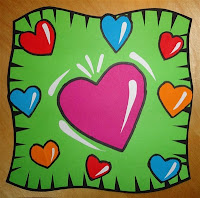You need:
- drawing sheet 12 by 12 cm
- indian ink
- dip pen
- pencil
- black construction paper
- glue
- various shells
Rembrandt was a painter, etcher and draftsman, but also an art dealer. In 1656 he went bankrupt and to pay the creditors his possessions had to be sold. An official made a list of all the things that were in Rembrandt's house. There was, for example, a large collection of objects from various continents in the art chamber, also known as 'cabinet of curiosities'.
In the room were dried animals, shells, spears from Indonesi, glass from Venice, a lion's skin and a box with coins and tokens. Sailors of the VOC often took the objects with them to the Netherlands as souvenir.
Etching of a shell, Rembrandt, 1650 (Rijksmuseum)
Discuss how ethings are made. Why does an etching make more money then a painting or drawing? Why does the artist have to scratch his signature in reverse on an etching?
View etchings by Rembrandt. What stands out?
- very detailed
- there are just lines
- shading for dark areas
- lifelike
- black and white
First let students practice in using indian ink. How do you make thick or thin lines? How do you make light or dark areas? What is hatching?
Students draw a shell like Rembrandt did. Draw with pencil, trace it wiht ink. Make hatch lines for the dark area's.
Paste all student art works together on a black construction sheet: Rembrandt's Cabinet of Curiosities.
Paste all student art works together on a black construction sheet: Rembrandt's Cabinet of Curiosities.














































